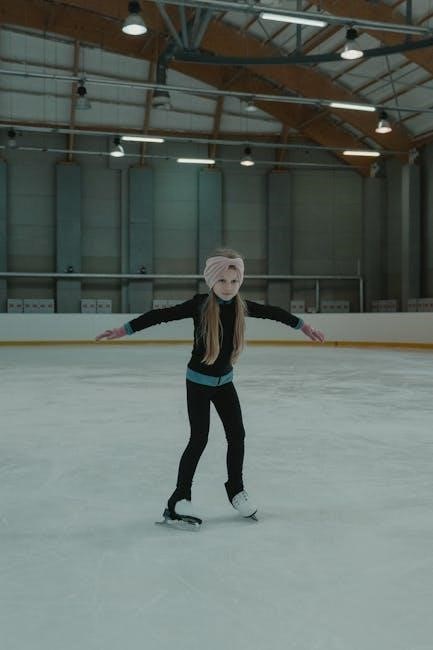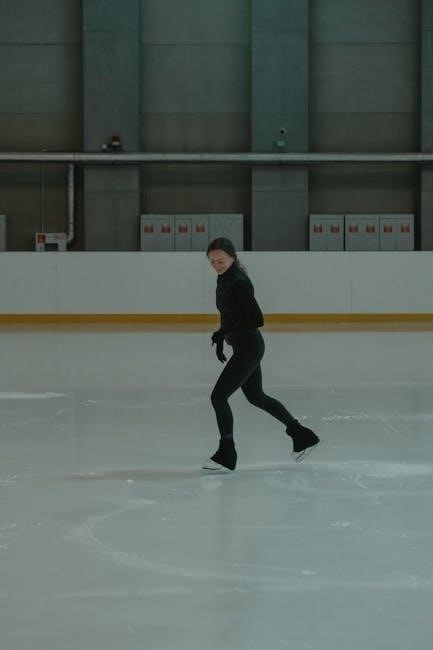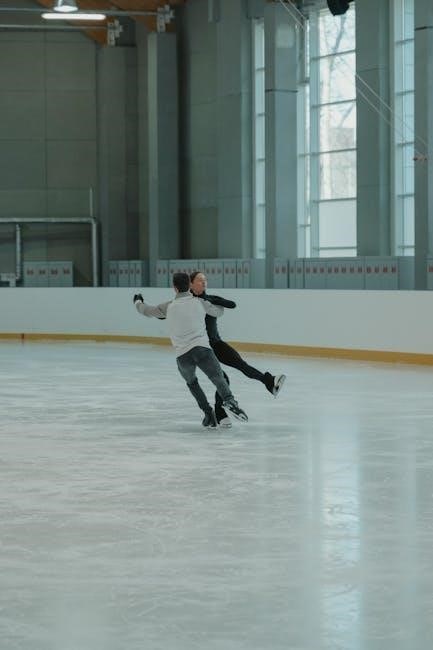Sciatica Exercises: A Comprehensive Guide (PDF Available)

Are you experiencing lower back pain radiating down your leg? This comprehensive guide offers effective sciatica exercises and stretches to relieve discomfort. A downloadable PDF containing these exercises is included for easy access. Discover movements to ease pain and improve mobility‚ helping you reclaim an active lifestyle.
Understanding Sciatica
Sciatica is a specific type of lower back pain characterized by altered sensation radiating from the lower back into the buttocks‚ hip‚ and down the leg‚ potentially affecting one or both lower extremities. Symptoms commonly include pain‚ numbness‚ burning sensations‚ and/or tingling. Often‚ sciatica results from injury to a muscle‚ ligament‚ or a bulging/ruptured disk‚ leading to irritation of the nerve roots that form the sciatic nerve.
The sciatic nerve‚ the largest in the body‚ originates in the lower back and extends down through the buttocks and the back of each leg. Understanding the anatomy and potential causes of sciatica is crucial for effective management. Factors such as tight muscles‚ particularly the piriformis‚ can compress the sciatic nerve‚ causing pain.
Furthermore‚ spinal conditions like spinal stenosis or spondylolisthesis can contribute to nerve impingement. Recognizing the underlying cause allows for targeted exercises and stretches to alleviate pressure on the sciatic nerve‚ reduce inflammation‚ and restore proper function. Differentiating sciatica pain from general leg soreness is also important; sciatica pain often originates from the back;
Common Sciatica Symptoms

Sciatica manifests through a variety of symptoms‚ primarily characterized by pain that radiates along the path of the sciatic nerve. This pain typically originates in the lower back or buttock and extends down the back of the leg‚ potentially reaching the foot and toes. The intensity of the pain can vary widely‚ ranging from a mild ache to a sharp‚ burning sensation or even excruciating discomfort.
In addition to pain‚ individuals with sciatica often experience numbness or tingling in the affected leg or foot. This altered sensation can make it difficult to perform everyday activities and may contribute to a feeling of weakness in the leg muscles. Some people describe the sensation as pins and needles.
Muscle weakness is another common symptom‚ which can affect the ability to move the leg or foot properly. In severe cases‚ sciatica can lead to loss of bowel or bladder control‚ a sign that requires immediate medical attention. Symptoms can be exacerbated by prolonged sitting‚ coughing‚ or sneezing. Recognizing these symptoms is crucial for seeking timely and appropriate treatment.
The Importance of Exercise for Sciatica Relief
Exercise plays a pivotal role in alleviating sciatica pain and promoting long-term recovery. Regular physical activity can help reduce inflammation around the sciatic nerve‚ a primary cause of discomfort. Specific exercises can strengthen the muscles in the back‚ abdomen‚ and legs‚ providing better support for the spine and reducing pressure on the nerve. Strengthening your core muscles adds stability to the spine.
Stretching exercises are equally crucial as they improve flexibility and range of motion‚ helping to release tension in the muscles that may be compressing the sciatic nerve. Nerve glide exercises‚ also known as nerve flossing‚ can help to gently mobilize the sciatic nerve‚ preventing it from becoming entrapped or irritated.
Moreover‚ exercise enhances blood flow to the affected area‚ promoting healing and reducing stiffness. Maintaining an active routine can help to ease sciatica if it returns. It’s essential to start slowly and gradually increase the intensity and duration of exercises to avoid exacerbating symptoms. Consulting with a healthcare professional or physical therapist is recommended to develop a safe and effective exercise plan tailored to individual needs.

Stretching Exercises for Sciatica
Stretching exercises are a cornerstone of sciatica relief‚ targeting tight muscles that can compress the sciatic nerve and exacerbate pain. These exercises aim to increase flexibility‚ reduce muscle tension‚ and improve range of motion‚ providing much-needed relief. The Piriformis stretch is particularly effective‚ targeting the piriformis muscle in the buttock‚ which can often irritate the sciatic nerve when tight.
Hamstring stretches are also beneficial‚ as tight hamstrings can contribute to lower back pain and sciatica. Gentle hamstring stretches‚ performed while seated or lying down‚ can help release tension and improve flexibility. Knee-to-chest stretches can also help to ease discomfort.
Other effective stretches include the spinal twist‚ which gently rotates the spine to release tension‚ and the cat-cow stretch‚ which improves spinal mobility. It’s essential to perform these stretches slowly and mindfully‚ avoiding any sudden or jerky movements that could worsen symptoms. Hold each stretch for 20-30 seconds and repeat several times throughout the day. Remember to listen to your body and stop if you experience any pain.
Nerve Glide Exercises
Nerve glide exercises‚ also known as nerve flossing‚ are designed to gently mobilize the sciatic nerve‚ reducing irritation and improving its ability to move freely within the surrounding tissues. These exercises involve specific movements that encourage the nerve to glide through the neural pathways‚ breaking down adhesions and promoting healthy nerve function.
One common nerve glide exercise involves lying on your back with your hips bent at a 90-degree angle. Extend one leg straight up towards the ceiling‚ then gently bend and point your ankle forwards and backwards. This movement creates a gentle stretch along the sciatic nerve‚ helping to improve its mobility.
Another effective nerve glide involves sitting in a chair with your feet flat on the floor. Extend one leg out in front of you‚ pointing your toes towards the ceiling. Gently tilt your head towards your chest while simultaneously flexing your foot downwards. Then‚ extend your head back while pointing your toes upwards. Repeat this movement rhythmically‚ focusing on the gentle gliding sensation along the nerve. It is important to breathe and repeat 3 times daily for up to 12-15 repetitions.
Strengthening Exercises for Sciatica
Strengthening exercises are crucial for supporting the spine‚ improving posture‚ and alleviating sciatica pain. Strong muscles in the back‚ core‚ and legs provide stability and reduce stress on the sciatic nerve. These exercises help to correct muscle imbalances and promote proper alignment‚ preventing further irritation of the nerve.
One effective strengthening exercise is the glute bridge. Lie on your back with your knees bent and feet flat on the floor. Engage your core and lift your hips off the floor‚ squeezing your glutes at the top of the movement. Hold for a few seconds and slowly lower back down. This exercise strengthens the glutes and hamstrings‚ which support the lower back and pelvis.
Another beneficial exercise is the hamstring curl. Using a resistance band or a hamstring curl machine‚ slowly bend your knee‚ bringing your heel towards your buttocks. Focus on contracting the hamstring muscles and maintain a controlled movement throughout the exercise. Strengthening the hamstrings helps to stabilize the pelvis and reduce strain on the sciatic nerve.
Core Stabilization Exercises
Core stabilization exercises play a vital role in managing sciatica by strengthening the muscles that support the spine and pelvis. A strong core helps to maintain proper posture‚ reduce stress on the lower back‚ and prevent further irritation of the sciatic nerve. These exercises focus on engaging the deep abdominal muscles to create a stable foundation for movement.
One effective core stabilization exercise is the pelvic tilt. Lie on your back with your knees bent and feet flat on the floor. Gently tilt your pelvis forward and backward‚ engaging your abdominal muscles to control the movement. This exercise helps to improve awareness of your core muscles and promote proper spinal alignment.
Another beneficial exercise is the dead bug. Lie on your back with your arms extended towards the ceiling and your knees bent at a 90-degree angle. Slowly lower one arm and the opposite leg towards the floor‚ maintaining a stable core and preventing your lower back from arching. Alternate sides and repeat. This exercise challenges your core stability and coordination.
Exercises to Avoid with Sciatica
While exercise is crucial for sciatica relief‚ certain movements can exacerbate symptoms and should be avoided. Identifying these exercises is essential to prevent further irritation of the sciatic nerve and promote healing. It’s important to listen to your body and stop any exercise that causes increased pain or discomfort.
Generally‚ exercises that involve excessive twisting or bending of the spine should be approached with caution or avoided altogether. These movements can put added pressure on the intervertebral discs and potentially compress the sciatic nerve. Examples include deep twisting motions and forward folds that round the back excessively.
Additionally‚ high-impact activities such as running or jumping may aggravate sciatica symptoms‚ especially during the acute phase of pain. These activities can place repetitive stress on the spine and surrounding tissues‚ leading to inflammation and increased nerve irritation. It’s advisable to opt for low-impact exercises like walking or swimming until your symptoms subside.
Creating a Sciatica Exercise Plan
Developing an effective sciatica exercise plan requires a thoughtful and personalized approach. It’s crucial to consider your individual symptoms‚ pain levels‚ and overall fitness level when designing your program. Consulting with a physical therapist or healthcare professional is highly recommended to ensure the exercises are appropriate and safe for your specific condition.
Begin with a gradual approach‚ starting with gentle stretches and low-impact exercises. Focus on movements that promote spinal alignment‚ flexibility‚ and core stability. As your pain decreases and your strength improves‚ you can gradually increase the intensity and duration of your workouts.
Consistency is key to achieving long-term sciatica relief. Aim to perform your exercises regularly‚ ideally several times per week. Incorporate a variety of stretches‚ nerve glides‚ and strengthening exercises to target different aspects of your condition. Remember to listen to your body and avoid pushing yourself too hard‚ especially in the initial stages of your exercise plan.
Downloadable PDF Resource for Sciatica Exercises
To further assist you in your journey to sciatica relief‚ we have created a comprehensive and easily accessible PDF resource. This downloadable guide compiles all the exercises discussed in this article‚ providing you with a convenient reference tool that you can use at home or on the go.
The PDF includes detailed instructions and illustrations for each exercise‚ ensuring you can perform them correctly and safely. It also offers modifications and variations to accommodate different fitness levels and pain sensitivities. Whether you’re a beginner or an experienced exerciser‚ you’ll find valuable information to help you tailor the exercises to your specific needs.
The PDF is designed to be user-friendly and printer-friendly‚ making it easy to incorporate into your daily routine. You can print it out and keep it handy in your exercise area‚ or you can access it digitally on your smartphone‚ tablet‚ or computer. Download the PDF today and take the first step towards managing your sciatica pain and improving your quality of life.

